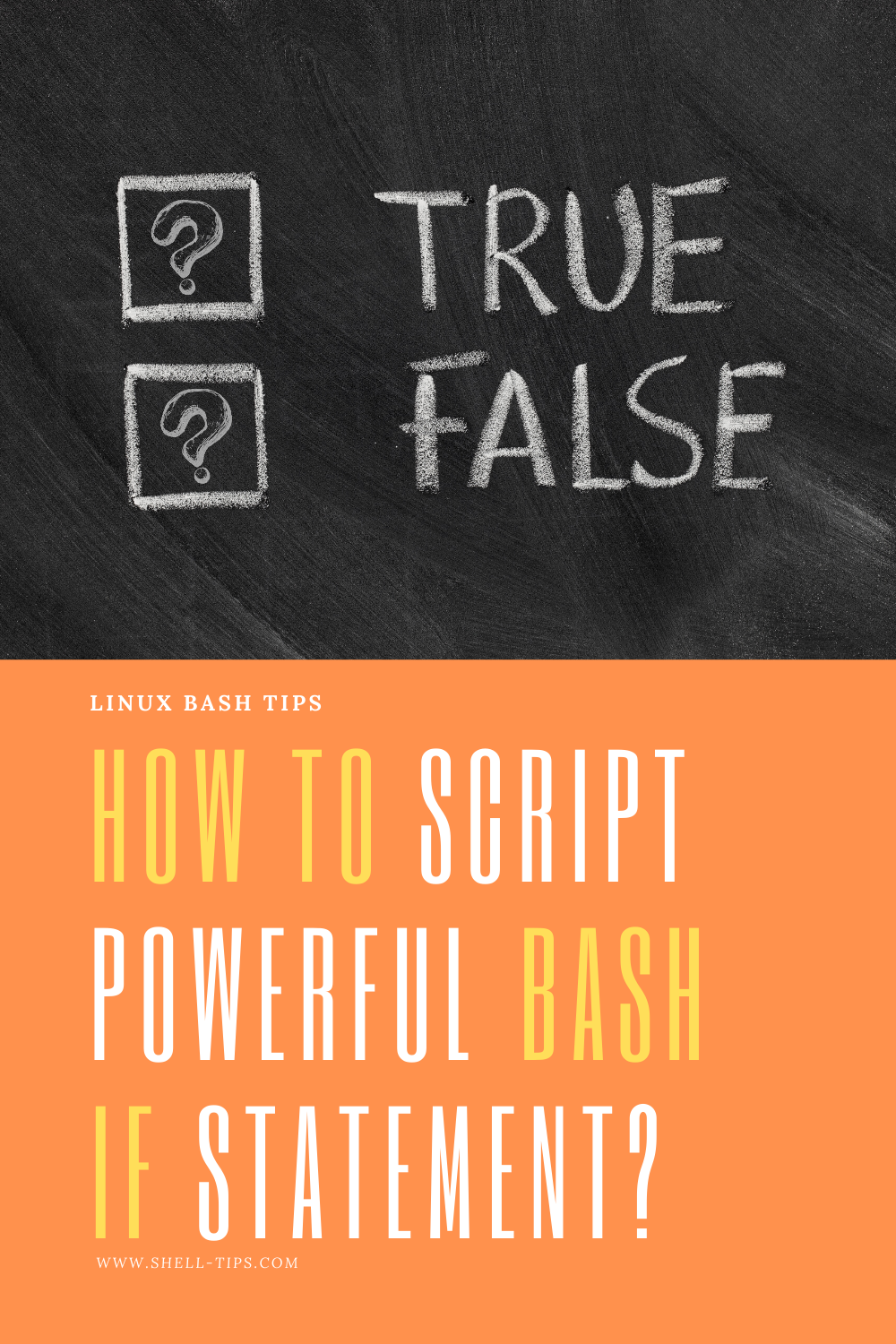Bash Unary Operator Expected
Overview of Bash Operators
Bash operators are used to perform different operations on data in a Bash script. They can be classified into unary operators, binary operators, and ternary operators. Unary operators operate on a single operand, while binary operators work on two operands, and ternary operators work on three operands.
Understanding Unary Operators in Bash
Unary operators are used to perform operations on a single operand. They can be used for arithmetic calculations, string manipulations, file testing, and more. Bash provides several unary operators that enable users to perform these operations efficiently.
Common Examples of Unary Operators
Some common examples of unary operators in Bash include the increment (++), decrement (–), logical not (!), and negation (-) operators. These operators can be used to increment or decrement the value of a variable, perform logical negation, or negate a number.
The Arithmetic Unary Operators in Bash
Bash provides various arithmetic unary operators that allow users to perform mathematical calculations on variables. These operators include the increment (++), decrement (–), unary plus (+), and unary minus (-) operators.
The increment and decrement operators increase or decrease the value of a variable by 1. For example:
“`
x=5
echo $((++x)) # Output: 6
echo $((–x)) # Output: 5
“`
The unary plus and unary minus operators allow users to make a numeric value positive or negative. For example:
“`
x=10
echo $((-x)) # Output: -10
echo $((+x)) # Output: 10
“`
The Relational Unary Operators in Bash
Relational unary operators in Bash are used for comparing values. These operators include the greater than (>), less than (<), greater than or equal to (>=), and less than or equal to (<=) operators. For example, to check if a variable is greater than a specific value, you can use the greater than operator (>):
“`
x=15
if ((x > 10)); then
echo “x is greater than 10”
fi
“`
The Logical Unary Operators in Bash
Bash provides logical unary operators for performing logical operations on variables. The logical NOT operator (!) is used to negate a boolean expression. For example:
“`
x=true
if ! $x; then
echo “The value of x is false”
fi
“`
Using the -z and -n Unary Operators for Testing Empty or Non-empty Strings
The -z and -n unary operators are used for testing empty or non-empty strings in Bash. The -z operator returns true if the string is empty, while the -n operator returns true if the string is non-empty.
For example:
“`
str=””
if [ -z “$str” ]; then
echo “The string is empty”
fi
str=”Bash”
if [ -n “$str” ]; then
echo “The string is non-empty”
fi
“`
Unary Operators for File Testing in Bash
Unary operators in Bash can also be used for file testing. For example, the -e unary operator is used to check if a file or directory exists.
“`
if [ -e “file.txt” ]; then
echo “The file exists”
fi
“`
The Negation Unary Operator in Bash
The negation unary operator (-) in Bash is used to negate the value of a variable or expression. It can be used to make a positive number negative or vice versa.
For example:
“`
x=15
echo $((-x)) # Output: -15
“`
Best Practices for Using Unary Operators in Bash
– Always ensure that the variable or operand used with a unary operator is initialized before performing any operation on it. This avoids issues like “unary operator expected” or “integer expression expected.”
– When performing arithmetic calculations, make sure to enclose the expression within $((…)) to evaluate it correctly.
– When comparing values using relational unary operators, use the appropriate comparison operator as per your requirements (>, <, >=, <=).
- Use proper conditional statements (if, else, elif) to handle different scenarios effectively.
- When testing strings or files, always enclose them within quotes to handle cases where they contain spaces or special characters.
FAQs:
Q: What does "unary operator expected" mean in a shell script?
A: The error "unary operator expected" typically occurs when a unary operator is used without a valid operand. Make sure to check if the variable or expression used with the operator is properly initialized.
Q: Why do I get the error "integer expression expected"?
A: The error "integer expression expected" occurs when an arithmetic operation is performed on a non-numeric value. Ensure that the variables or operands involved in the operation are numeric or convert them to numbers before performing the calculation.
Q: How can I fix the "linux unary operator expected" issue?
A: The error "linux unary operator expected" typically arises due to a syntax error in the script. Make sure the syntax of your script is correct, and all the unary operators are used with valid operands.
Q: How to check if a variable exists in Bash?
A: You can use the -v unary operator to check if a variable exists in Bash. For example:
```
if [ -v var ]; then
echo "The variable exists"
fi
```
Q: How to check if a variable is not a number (NaN) in Bash?
A: You can use the -o unary operator to check if a variable is not a number (NaN) in Bash. For example:
```
if [ -o "$var" ]; then
echo "The variable is not a number"
fi
```
Q: How to perform logical OR in Bash?
A: The logical OR operator (||) can be used to perform logical OR in Bash. For example:
```
if [ condition1 ] || [ condition2 ]; then
echo "Either condition1 or condition2 is true"
fi
```
In conclusion, unary operators play a vital role in Bash scripting, allowing users to perform various operations on variables, strings, and files. By understanding the different types of unary operators, implementing best practices, and addressing common issues like "unary operator expected," users can effectively leverage the power of these operators to enhance their Bash scripts.
Ubuntu: -Gt: Unary Operator Expected Error On Bash
What Is A Unary Operator In Linux?
In the world of Linux and Unix-like operating systems, numerous operators play a vital role in command-line execution. Among these operators, unary operators hold a significant position. But what exactly is a unary operator in Linux? Let’s uncover the essence of unary operators by delving into their definition, functions, and usage within the Linux environment.
Unary operators, as the name suggests, are operators that work with single operands. In other words, they operate on a single value or variable. These operators come in various forms and are employed for different purposes in Linux command-line operations.
There are numerous unary operators available in Linux scripting, each serving a specific function. They can be categorized into six main types:
1. Logical unary operators:
– ! (logical NOT): It reverses the logical value of the operand, turning TRUE into FALSE and vice versa.
2. Arithmetic unary operators:
– + (unary plus): Represents a positive value, although it doesn’t have any significant effect since a positive number is already positive.
– – (unary minus): Negates the value of the operand, effectively flipping its sign.
3. Bitwise unary operators:
– ~ (bitwise NOT): It performs a bitwise inversion on the operand, flipping all the bits.
4. File unary operators:
– -b (Block special file): Evaluates if the operand is a block special file.
– -c (Character special file): Checks if the operand is a character special file.
– -d (Directory): Verifies if the operand is a directory.
– -f (Regular file): Determines if the operand is a regular file.
– -g (Set-group-ID): Assesses if the operand has its set-group-ID flag set.
– -L (Symbolic link): Determines if the operand is a symbolic link.
– -p (Named pipe): Checks if the operand is a named pipe.
– -r (Readable): Verifies if the operand is readable.
– -s (Non-zero size): Determines if the size of the operand is non-zero.
– -S (Socket): Checks if the operand is a socket file.
– -t (File descriptor): Checks if the file descriptor is associated with a terminal.
– -u (Set-user-ID): Assesses if the operand has its set-user-ID flag set.
– -w (Writable): Verifies if the operand is writable.
– -x (Executable): Determines if the operand is executable.
5. String unary operators:
– -z (Empty string): Checks if the string operand is empty.
– -n (Non-empty string): Verifies if the string operand is non-empty.
6. Variable unary operators:
– $ (Variable value): Retrieves the value of the variable or parameter.
Now that we understand the different types of unary operators let’s explore their usage. Unary operators are widely used in conditional statements and loops to perform logical evaluations, check file attributes or permissions, handle variables, and more.
For instance, the logical unary operator “!” can be used to invert the outcome of a condition. Consider the following example:
“`shell
if ! [ -f file.txt ]; then
echo “The file does not exist.”
fi
“`
In this case, the script checks if the file “file.txt” does not exist and prints a corresponding message.
Similarly, the file unary operator “-s” can be employed to check if a file has a non-zero size. Let’s consider the following code snippet:
“`shell
filename=”file.txt”
if [ -s “$filename” ]; then
echo “The file $filename is not empty”
else
echo “The file $filename is empty”
fi
“`
By evaluating the size of the file, the script determines whether it is empty or not.
Unary operators also hold great significance in variable handling. The “$” operator, for instance, is used to retrieve the value of a variable. Here’s an example:
“`shell
name=”John”
echo “Hello, $name”
“`
In this example, the value of the variable “name” is displayed within a string using the “$” operator.
FAQs:
Q: Can multiple unary operators be used together?
A: Yes, multiple unary operators can be used in combination to achieve desired outcomes. However, the order of their application must be taken into consideration.
Q: Are unary operators limited to the command line?
A: No, unary operators can be utilized in both command-line operations and scripting. They are commonly seen within shell scripts.
Q: Are there any limitations to using unary operators in conditional statements?
A: Unary operators can be used to perform various evaluations within conditional statements. However, it is crucial to ensure proper syntax and operand placement for accurate results.
Q: Do unary operators always return Boolean values?
A: No, unary operators can often return values beyond Boolean outcomes. For example, the “-z” operator returns TRUE if the string operand is empty, but it does not return a Boolean TRUE or FALSE. This requires careful handling in scripts.
Q: Can I create custom unary operators in Linux?
A: Linux does not provide an option to create custom unary operators. The available unary operators should suffice for most tasks.
In conclusion, unary operators play a crucial role in the Linux environment by allowing for logical, arithmetic, bitwise, file, string, and variable operations. Their availability in Linux makes it possible to perform complex evaluations, handle variables, and execute conditional statements with ease. Understanding the practicality and usage of these operators contributes to effective Linux scripting and command-line operations.
How To Check For Error In Bash?
Bash (Bourne Again SHell) is a commonly used command-line interpreter on Unix and Unix-like operating systems. It serves as the default login shell for most Linux distributions and also provides the scripting capabilities required for automating tasks. As with any programming language or scripting tool, errors can occur while working with Bash scripts. In this article, we will explore various techniques to help you effectively check for errors and troubleshoot issues in Bash scripts.
1. Enable Error Checking:
By default, Bash does not halt on errors, so it is crucial to enable error checking explicitly. Start your script with the following line to ensure errors are captured and addressed:
#!/bin/bash
set -e
The “set -e” command instructs Bash to exit immediately if any command within the script fails. This will prevent the script from continuing execution, helping to identify and isolate errors.
2. Debug mode:
Another useful option for error checking is the debug mode, which provides detailed information about the execution flow. By adding the “set -x” command at the beginning of your script, you can trace command execution, variable assignments, and function calls. This helps you understand the specific line causing an error:
#!/bin/bash
set -e
set -x
When the script is run, each line is displayed along with the output, allowing you to identify errors more easily.
3. Error Trapping:
Error trapping helps you handle potential errors gracefully by running a specific command or script segment when an error occurs. Use the “trap” command to define a custom error handling routine. For example:
#!/bin/bash
set -e
set -x
trap “echo Error occurred, script exiting…; exit 1” ERR
Here, “echo Error occurred, script exiting…” is executed and the script exits with an exit code of 1 when an error occurs.
4. Error Reporting:
In addition to the techniques mentioned above, you can also log errors to a file or display custom error messages on the console to facilitate troubleshooting. By redirecting the standard error (stderr) to a file or using the “echo” command, you can save and analyze error messages:
#!/bin/bash
set -e
set -x
LOG_FILE=”error.log”
exec 2>”$LOG_FILE”
echo “Custom error message” >&2
In this example, the “exec 2>” command redirects stderr to the specified log file, and “echo” outputs a customized error message to stderr.
FAQs
Q1. Why should I enable error checking in my Bash scripts?
Enabling error checking ensures that your script halts immediately when an error occurs, preventing the execution of potentially incorrect or incomplete commands. It helps identify errors early and promotes script reliability.
Q2. Can I selectively disable error checking for specific commands?
Yes, you can selectively disable error checking by using the “set +e” command before the command and then re-enabling it with “set -e” afterward. However, use this with caution, as it may undermine the purpose of error checking.
Q3. Are there any tools available to assist with error checking in Bash scripts?
Yes, several tools like “shellcheck” and “bashlint” can automatically check and highlight potential errors and syntax issues in Bash scripts. These tools augment your manual error checking efforts.
Q4. How do I handle errors in a specific section of my script?
To handle errors in a specific section of your script, you can use a combination of conditional statements (if, else) and exit statuses (exit code) to perform different actions based on the result of commands or functions.
Q5. Is it better to log errors or display custom error messages for troubleshooting?
The choice between logging errors or displaying custom messages depends on your specific requirements. Generally, logging errors to a file allows for future analysis, while displaying custom messages on the console provides immediate feedback during script execution.
In conclusion, error checking is an essential aspect of Bash scripting. Enabling error checking, using debug mode, error trapping, and employing error reporting techniques are effective ways to identify and handle errors in Bash scripts. By following these practices, you can improve the reliability and maintainability of your scripts, making them more robust and easier to troubleshoot.
Keywords searched by users: bash unary operator expected Unary operator expected, Unary operator expected in shell script, Integer expression expected, Linux unary operator expected, If var bash, If not number bash, Bash comparison operators, Or in bash
Categories: Top 100 Bash Unary Operator Expected
See more here: nhanvietluanvan.com
Unary Operator Expected
Introduction:
Unary operators are a fundamental concept in programming languages, including English. While primarily utilized in computer science, the concept of unary operators can also be applied to understand and analyze various linguistic aspects of English. In this article, we delve into the unary operator expected in English, exploring its significance, common usage, and addressing frequently asked questions.
Unary Operator in English:
A unary operator is a type of operator that operates on a single operand, making it a perfect tool for expressing expectations, predictions, or likelihood in English. The unary operator expected serves the purpose of conveying the anticipation or probability of an event or circumstance occurring. It helps us navigate through communication by assessing the likelihood of certain situations or outcomes.
Usage and Examples of Unary Operator Expected in English:
1. Modal Verbs:
Modal verbs, such as ‘could,’ ‘should,’ ‘might,’ and ‘may,’ can be considered the unary operators of English. These verbs express expectations, possibilities, or predictions. For instance, “She may arrive late,” indicates a potential delayed arrival. Modal verbs help us convey the unary operator expected with precision and subtlety.
2. Adverbs:
Certain adverbs also serve as unary operators, enabling us to express the expected outcome of an action or the likelihood of a situation. Adverbs, such as ‘probably,’ ‘possibly,’ ‘likely,’ and ‘certainly,’ enhance the unary operator expected. For example, “The train will probably be delayed,” implies an anticipated delay.
3. Conditional Statements:
Conditional statements often involve the unary operator expected, as they convey an outcome based on specific conditions. By using keywords like ‘if,’ ‘when,’ or ‘unless,’ we can present the expected scenario. For instance, “If it rains, we will cancel the outdoor event,” presents the expected outcome based on the condition of rain.
4. Comparative and Superlative Forms:
When we employ comparative or superlative forms of adjectives, we can also express the unary operator expected. For example, “This is the most difficult exam,” assumes an expected level of difficulty compared to other exams.
5. Future Tense:
Utilizing the future tense allows us to express the unary operator expected by indicating an event or action that will occur at a later time. For instance, “We will meet tomorrow,” suggests an expected encounter.
6. Cultural and Social Expectations:
Unary operators also extend to cultural and social expectations, where particular actions or behaviors are deemed customary or anticipated within a specific context. Cultural norms create a shared understanding of the unary operator expected, ensuring smooth communication and interaction.
FAQs (Frequently Asked Questions):
1. Are unary operators only used in programming languages?
No, the concept of unary operators, specifically the unary operator expected, extends beyond programming languages. In English, unary operators are extensively employed to express expectations, probabilities, and anticipated outcomes within various linguistic contexts.
2. Are modal verbs the only way to express the unary operator expected?
While modal verbs are commonly used to express the unary operator expected, they are not the only means. Adverbs, conditional statements, comparative forms, future tense, and cultural expectations also serve as effective tools to convey the unary operator expected.
3. Can unary operators be used in formal writing?
Yes, unary operators, when used appropriately, can enhance clarity and precision in formal writing. Expressing expectations or probabilities can provide valuable insights to readers and convey meaning effectively.
4. Do unary operators have regional variations in usage?
Unary operators, including the unary operator expected, are generally universal in English usage. However, the frequency and specific choices of expressions may vary across regions and dialects. Cultural expectations within distinct social contexts may influence their usage.
5. Can the unary operator expected have different levels of certainty?
Yes, the unary operator expected can have varying degrees of certainty, ranging from slight possibilities to near certainties. Modal verbs like ‘could’ and ‘might’ suggest lower certainty, while ‘will’ and ‘certainly’ indicate higher levels.
Conclusion:
Understanding and utilizing the unary operator expected in English allows us to communicate expectations, probabilities, and anticipated outcomes with precision and clarity. Modal verbs, adverbs, conditional statements, comparative and superlative forms, future tense, and social expectations contribute to the utilization of this unary operator. By familiarizing ourselves with these linguistic tools, we enhance our ability to navigate through various communication scenarios and create effective interpersonal connections.
Unary Operator Expected In Shell Script
In shell scripting, unary operators play a vital role in performing various operations on variables and expressions. A unary operator operates on a single operand and can be used for tasks such as negating a value, incrementing or decrementing a variable, and checking conditions. In this article, we will explore some commonly used unary operators in shell scripting and their expected behavior.
Arithmetic Unary Operators:
1. + (Unary Plus): The unary plus operator works as an arithmetic identity operator. It does not change the sign of the operand and is rarely used in shell scripting.
Example:
“`
num=5
result=$(($+num)) # Output: 5
“`
2. – (Unary Minus): The unary minus operator negates the value of the operand, changing its sign.
Example:
“`
num=5
result=$(($-num)) # Output: -5
“`
Logical Unary Operators:
1. ! (Logical NOT): The logical NOT operator negates the truth value of the operand. If the operand is true, it returns false, and vice versa.
Example:
“`
flag=true
result=$(!flag) # Output: false
“`
String Unary Operators:
1. -n: The -n unary operator is used to check if a string is non-empty. It returns true if the string has a length greater than zero.
Example:
“`
name=”John”
if [ -n “$name” ]; then
echo “Name is not empty”
fi
“`
2. -z: The -z unary operator checks if a string is empty. It returns true if the string has zero length.
Example:
“`
name=””
if [ -z “$name” ]; then
echo “Name is empty”
fi
“`
File Unary Operators:
1. -d: The -d unary operator checks if a file exists and is a directory.
Example:
“`
directory=”/path/to/directory”
if [ -d “$directory” ]; then
echo “Directory exists”
fi
“`
2. -f: The -f unary operator checks if a file exists and is a regular file.
Example:
“`
file=”/path/to/file.txt”
if [ -f “$file” ]; then
echo “File exists”
fi
“`
3. -s: The -s unary operator checks if a file exists and is not empty.
Example:
“`
file=”/path/to/file.txt”
if [ -s “$file” ]; then
echo “File exists and is not empty”
fi
“`
FAQs:
Q: Can I use multiple unary operators in a single expression?
A: Yes, you can use multiple unary operators in a single expression. However, make sure to use proper syntax and operator precedence.
Q: What is the difference between the -n and -z unary operators?
A: The -n operator checks if a string is non-empty, whereas -z checks if a string is empty. They are opposite conditions.
Q: Does the unary minus operator work with non-numeric values?
A: No, the unary minus operator (-) is used for numeric values only. Using it on non-numeric values may lead to unexpected results.
Q: Can I use unary operators with variables in if statements?
A: Yes, unary operators are commonly used in if statements to perform various checks and validations.
Q: Are there any other unary operators available in shell scripting?
A: Yes, shell scripting provides several other unary operators like -e (checks if a file/directory exists), -r (checks file/directory read permission), -x (checks file/directory execute permission), and more.
In conclusion, unary operators in shell scripting provide a powerful toolset for manipulating variables, checking conditions, and performing various operations. Understanding these operators and their expected behavior is crucial in writing effective shell scripts. By leveraging the power of unary operators, you can enhance the functionality and efficiency of your shell scripts.
Images related to the topic bash unary operator expected

Found 46 images related to bash unary operator expected theme






![Unix&Linux] bash : unary operator expected Unix&Linux] Bash : Unary Operator Expected](https://img1.daumcdn.net/thumb/C176x176/?fname=https://t1.daumcdn.net/cfile/tistory/997C024D5E740EA41E)












Article link: bash unary operator expected.
Learn more about the topic bash unary operator expected.
- (Resolved) ‘Unary Operator Expected’ error in Bash – TecAdmin
- Bash script: Unary operator expected – LinuxConfig.org
- “unary operator expected” error in Bash if condition
- Solving the “Unary Operator Expected” Error – Baeldung
- Bash Unary Operator Expected: What Does It Mean?
- Bash script: Unary operator expected – LinuxConfig.org
- Bash Error Detection and Handling: Tips and Tricks – TecAdmin
- Using Logical Operators in Bash: A Comprehensive Guide – TecAdmin
- Using the ‘-ge’ Operator in Bash: A Comprehensive Guide – TecAdmin
- How to solve Unary operator expected errors – Tutorialspoint
- Resolve Issue: Bash Unary Operator Expected – Linux Hint
- Solve Unary Operator Expected Error in Bash – Delft Stack
- “bash: [: =: unary operator expected” on Linux for Robotics …
- Writing shell scripts – Lesson 9: Stay Out Of Trouble
See more: https://nhanvietluanvan.com/luat-hoc/